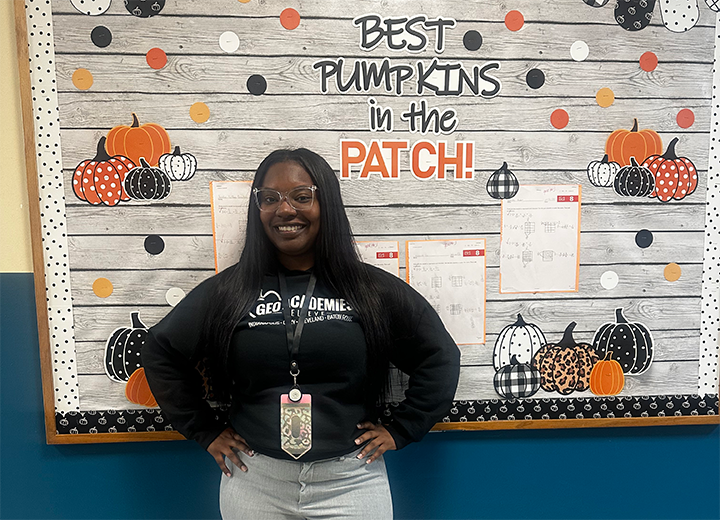When fear and divisiveness cast a shadow over our schools, gratitude may help us see the good. Yet the simplicity of gratitude belies how powerfully it seems to function. Studies indicate that gratitude practices like counting your blessings or writing about things you are grateful for can actually improve physical and mental health—and enhance your willingness to trust others. If you take a look at the gratitude research conducted in schools and colleges, you will see evidence that gratitude may contribute to a greater sense of social support, school belonging, and satisfaction with the school experience, while lessening students’ stress and depression.
Sometimes, it may feel like a struggle to find something positive to note—particularly for kids in your class who might be facing genuine threats to their well-being (like chronic abuse, neglect, or systemic inequality). Rather than blindly encouraging them to “look on the bright side,” researchers Jeffrey Froh and Giacomo Bono suggest listening deeply, empathizing, and acknowledging their feelings. This can help them cultivate resilience, which—along with other qualities like self-compassion and hope—could help plant the seeds for gratefulness.
We should also bear in mind that culture, race, socioeconomic status, and religious background may influence the way students and colleagues express and practice gratitude. If you don’t know how and for whom the students in your class typically express gratitude, why not ask, as a first step toward cultivating gratitude in your class? You could even have your students go home and interview their families about the ways they like to express gratitude, what they feel grateful for, and times when they think gratitude is appropriate. Then have them return to class and report on their interviews. This activity encourages curiosity while opening the door to a wider discussion of cultural differences. It also provides an opportunity for students to share practices or rituals that everyone could try.
Here are three other gratitude practices you can practice with students.
Three Good Things
Are you witnessing more restless energy and frustration in your classroom lately? You may be struggling for your students’ attention and wondering how you can set a more positive tone on the classroom.
Three Good Things for Students asks kids to record positive things that happen to them each day. The key to this activity is not just identifying rewarding experiences, but also considering how or why they happened. For example, a student begins by acknowledging how hard she worked on her math homework (the good thing), but she also digs deeper to answer the questions, “How did I accomplish that? What exactly did I do?” (the explanation). If time allows, students can also share at least one good thing with each other to reinforce positive thinking. In a study of around 600 students ages 8 to 11, the group who wrote about Three Good Things reported being happier afterward, compared to the group who just journaled about their daily experiences.
Gratitude Letter
This exercise provides prompts for writing a letter of thanks to someone and giving it directly to that person. Ask your students to think of all the people at school who have been kind to them this year, choosing one particular person to recognize (e.g., another student, a custodian, a teacher). One study followed children and adolescents as they wrote and delivered a Gratitude Letter. Compared to writing about daily events, the Gratitude Letter worked well for students who had started out low in positive emotions; they felt better afterward and even two months later.
Gratitude Journal
In some cases, letter-writing activity or brief exercise may not have the same power as a more sustained practice. It’s easy for kids (and us!) to focus on the negative. In fact, we’re wired with a negativity bias that serves as a form of self-protection. We look out for both real and perceived threats to our emotional or physical safety (a shove, an insult, even a smirk from a peer).
If you are hoping for a more sustained shift in perspective among students and staff at your school, consider using gratitude journals. The Gratitude Journal for Students provides a simple structure for slowly shifting one’s perspective toward the positive. Students regularly track good things that happen in their lives, like finishing all of their homework or getting extra time to spend with a good friend. Encourage students to share excerpts of their journal. There is power in students sharing notes of thanks with each other in the classroom setting or publicly acknowledging school staff in an assembly. These are more powerful than simple thank you notes, because all writers share them in person and have the opportunity to surprise their benefactor by reading their letter aloud.
In a recent study, students in sixth and seventh grade who completed Gratitude Journals daily (for only two weeks) ended up being more satisfied with their school—even three weeks afterward—than students who didn’t do any journaling. Compared to students who journaled about their hassles, these students also felt less negative emotion, greater satisfaction with their home, and more optimism.
“When you are grateful, your heart is open—open towards others, open for surprise,” says David Steindl-Rast, a Benedictine monk who spent his teen years under the Nazi occupation. “Because gratitude expresses courage, it spreads calm.” It takes courage to admit that you depend on other people, which is one of the things that can happen when we thank someone. Gratitude is an alternative to fear of other people. It can help us to feel less alone with the problems we face.


















%2015.png)
%20100.png)
%203%20%2B%20Spotlight.png)
%209.png)
%208%20%2B%20Spotlight.png)
%208.png)
%207.png)




%204.png)
%203.png)
%202.png)
%201.png)
.png)
.png)

.png)

.png)
.png)
.png)
.png)
.png)
.png)
.png)